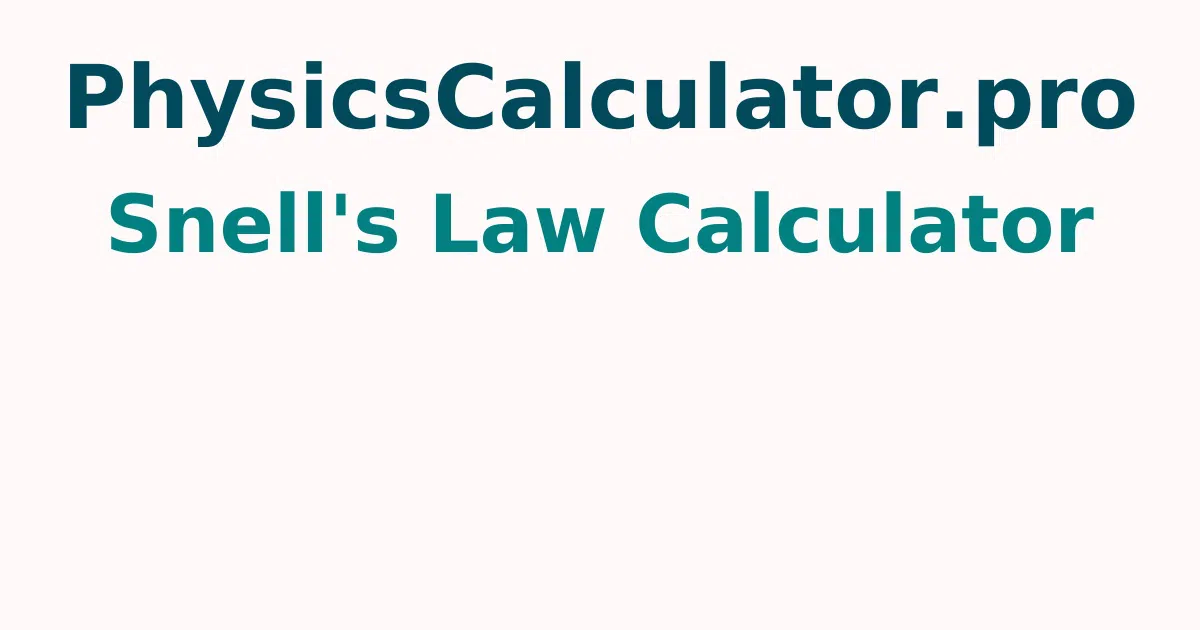Snell's Law Calculator
The Snell's Law Calculator is a free tool that calculates the angle of refraction in a fraction of a second using the Snell's Law Formula. All you should do is fill in the boxes in the input fields and press the calculate button to get instant results.
How to use the Snell's Law Calculator?
The following is how to use Snell's law calculator to obtain the angle of refraction in the Snell's Law
- In the input area, Enter the refraction index of the first and second mediums of refractive index n1 and n1, the angle of incidence θ1.
- Simply put the inputs as n1,n2 and θ1
- To calculate the angle of refraction θ2 press the calculate button.
- Finally,To get the angle of refraction is calculated from the snell's law calculator.
Snell's Law of Refraction
Snell's Law of refraction states that when a light ray passes through a different medium, its wavelength and speed change. The beam bends in one of two directions: towards or away from the media boundary. Angle of Refraction is determined by the refraction indices of both media.
The Formula for the Snell's Law of Referaction: n1sin(θ1)=n2sin(θ2)
Where,
- The first medium of refractive index is n1.
- The refractive index of second medium is n2.
- The angle of incidence, which is the angle formed by the line normal to the border between two media and the incoming ray is θ1.
- The angle of refraction is the angle formed by the normal to the boundary and the ray travelling through the medium is θ2.
For more concepts check out physicscalculatorpro.com to get quick answers by using this free tool.
Snell's Law Example
Question 1:How do you calculate the angle of refraction of a light beam that passes through air and into glass? If the Angle of Incidence is 35°, the refractive index of air is 1.000233, and the refractive index of glass is 2.5, what is the refractive index of air?
Solution:
Consider the problem
We have the inputs are,
The first medium of refractive index, n1= 1.000233
The second medium of refractive index, n2= 2.5
The angle of incidence, θ1= 35°
Formula: We know that, Angle of refraction(θ2) = sin-1(n1*sin(θ2)/n2)
By substituting the inputs in the previous formula, we get the following equation.
Angle of refraction(θ2) = sin-1( 1.000233 *sin(35°) / 2.5)
Angle of refraction(θ2) = 13.3°
Therefore, the angle of refraction(θ2) of a light beam is 13.3°
FAQs on Snell's Law Calculator
1. How do you calculate the angle of Refraction using Snell's Law?
The Snell's Law Formula can be used to compute the angle of refraction: n1sin(θ1)=n2sin(θ2)
Where,
- The first medium of refractive index is n1.
- The refractive index of second medium is n2.
- θ1 be the angle of incidence
- θ2 be the angle of refraction
2. In which cases does Snell's Law not apply?
When the angle of incidence is zero, Snell's Law does not apply because the angle of refraction is likewise zero.
3. What is the purpose of Snell's Law?
When light or other waves flow through a border between two isotropic mediums,Snell's Law describes the relationship between angle of incidence and refraction.
